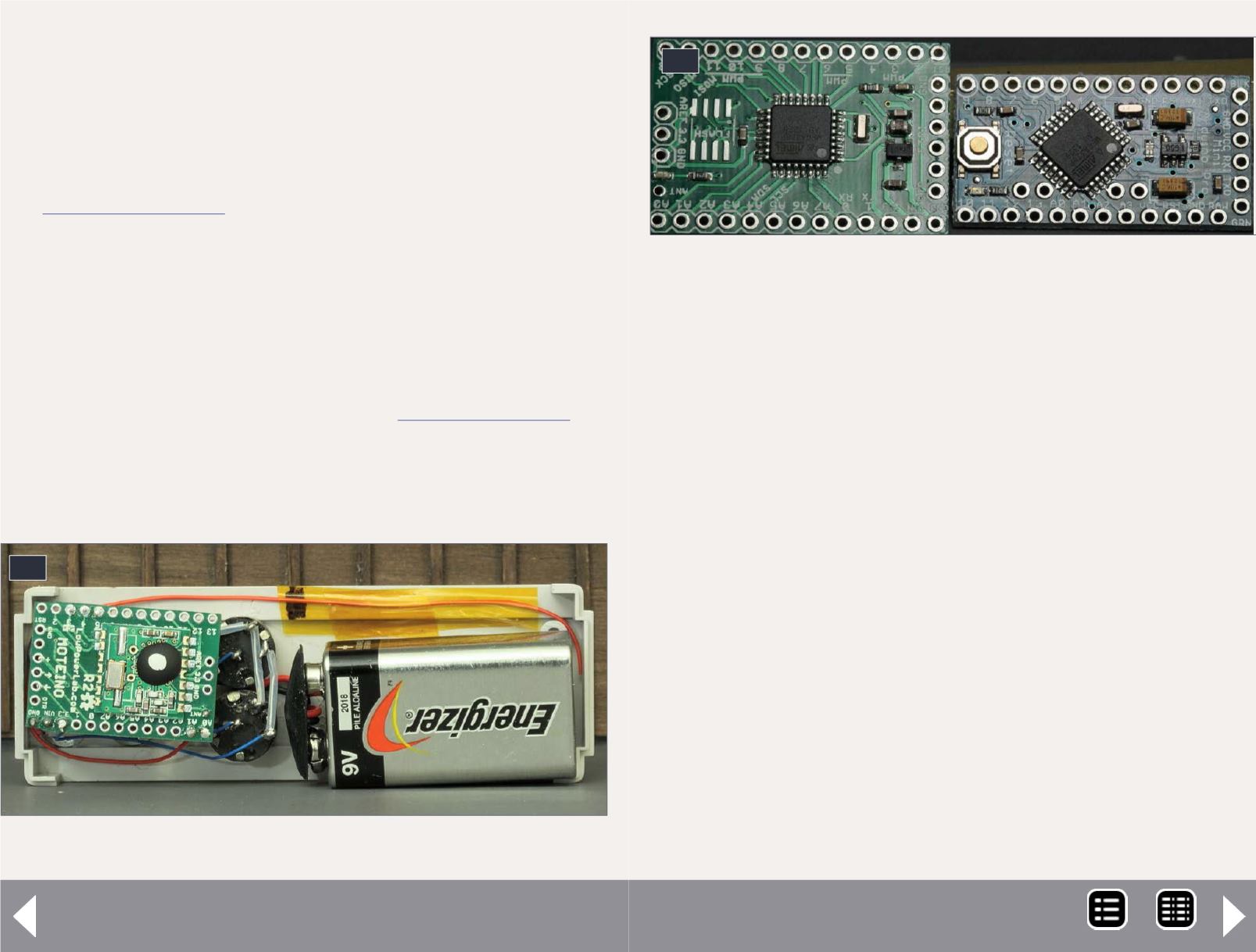
A more powerful locomotive
The 5-volt power set-up works quite well but if you really
want to power stubborn 12-volt motors, one might want a bit
more oomph! This next loco separates the DC to DC converter
from the battery manager and allows for converting the vary-
ing (3-4.2 volt) battery voltage to anywhere from 6 to 14 volts
I adjusted mine to run at 10 volts. I
thought it was a good tradeoff for higher motor power and rea-
sonable battery drain. The converter will put out voltages up
to 35 volts but you may destroy the electronics and motors! So
please make adjustments before you connect it in your model
loco! You’ll need a voltmeter to make the adjustment. Pay
close attention to all pins and connections.
This design uses a different battery manager board as well, the
inexpensive protection circuit module at
5,
and is wired into the circuit differently. Battery manager/pro-
tection boards must always be connected to the battery. In
this circuit, the reed switch disconnects the load and the track
power (lowered to 4.4 volts) to the battery manager. This
31. Another view of the remote controller internals.
31
Battery-powered models - 13
allows the battery to hold its charge longer when not in use.
The battery is charged in this design only when the reed switch
is on (i.e. no magnet present).
You will get noticeably more power delivered to the motors, but
battery drain will occur more rapidly. Because the DC-DC con-
verter accepts a wide range for input, and regulates the output,
the voltage delivered will remain relatively constant whether
powered from the rails, or from the battery directly throughout
its 3-4.2-volt range. It’s quite something to see the locomotive
go over dirty track, switch frogs, and uneven rails without miss-
ing a beat. Take a look at all the models in operation:
Even though this version provides more power, I am not happy
with it. The battery manager used here allows a very high
charging current, only limited by the 5-volt switching regula-
tor’s current limit. Fast recharging in these models is not nec-
essary. As such, this still performs within the limits of the LiPo
battery specification. A better design would have used a spe-
cial charging circuit specifically for LiPo batteries, rather than
the 4.4-volt circuit. Moreover, to my thinking, the slow speed
of the locomotive at 5 volts is a benefit, not a weakness. In my
own modeling, I have more confidence in the previous design,
and will prefer its use.
32. Controller comparison: Moteino (left) & ProMini.
32
MRH-Nov 2014


